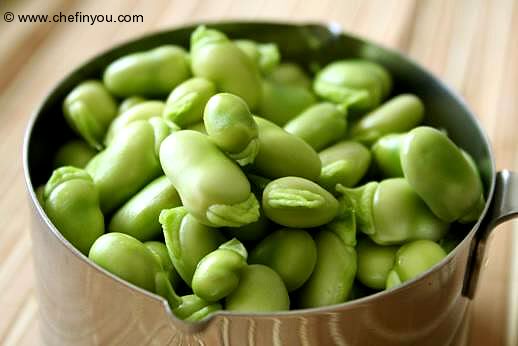Fava beans are native to North Africa and Southeast Asia. They have a long history in world agriculture, being the most ancient plant in cultivation, and among the easiest to grow. Fava beans are not a bean, but a pea, or vetch. They are annuals that are high in protein. Some varieties will withstand frost and some freezing. As well as being an excellent food crop, they are good nitrogen fixers, so make one of the best green manures. Where garden peas and beans will fix 60-80 lbs. of nitrogen per acre, and clover will fix 100 lbs. per acre, favas will fix up to 200 lbs. per acre. The usual seed life is 4 to 6 years.
Botanical Name: Vicia faba. Also called: broad bean, horse bean, Windsor bean, butter bean, faba bean. Varieties/Cultivars: Large Seeded Green Windsor, Aquadulce, Mr. Barton’s Small Seeded, Sweet Lorraine
Hardiness Zone: 3 to 11, depending on variety (Vancouver is 6A-8A)
Harvest (from direct seed): 182 days (26 weeks)
Size at Maturity: 48 - 60" h. by 12" w.
Planting Dates: Mid October - November
Harvest Dates: Late May - early July
Ideal Site and Soil
Fava beans grow best in a sunny location, sheltered from the wind. They will grow in most soils, but produce higher yields in rich, moisture-retentive, well drained soil. Favas prefer neutral to slightly alkaline soil, so add lime or rock phosphate and, as they also want potassium, chop in fresh comfrey weed as a green manure or well composted manure when preparing the soil.
Cultivation / Plant Care
Dig the planting site and add compost two weeks prior to planting. Plant early enough to produce 4 inch plants before the first frost, and mulch the young seedlings to protect against an early freeze. Covering the crop will also add protection for the more tender varieties.
To aid germination, soak seeds for 24 hours then plant double rows, or plant in blocks and stagger placement to conserve space. Plant seeds 4 inches deep and 6 inches apart. In cold or wet soils, germination can be poor. Fertilize with 4-10-4 in February. In spring, support with stakes and string, as the stalks are not strong and will break in a wind.
Pinching back each plant top when the first pods begin to form will produce higher and more uniform yield. The tops can be cooked like spinach.
Problems & Pests
Pea/Bean Weevil: May be a problem in early spring. You will see notched leaves. Make sure to rotate crops.
Black Aphids: Wash the aphids off the leaves with a strong stream of water.
Harvest Notes
Harvest fava beans when the pods look plump and begin to droop from the weight of the pods, or when you can feel the bulge of the bean inside the pod. The bottom pods usually ripen first. To get very tender, small beans, harvest when the pod is the size of a fully ripe English pea. The whole pod can be cooked at this stage. For normal-sized green favas, harvest when the pods are close to an inch wide, and you can see the individual bean bulging within. As the beans dry, the outer pod turns black. Now they are ready to grind into flour use as soup beans, or save for next year.
When your harvest is finished, cut the spent vines off at soil line, leaving the roots. The nitrogen in the root nodules will stay in place in the soil until you till it. Chop the vines into the compost, or chop finely and use as green mulch on other food plants.
Nutrition & Recipes
As well as being high in protein, dietary fibre, phosphorus, copper, manganese, and folate, fava beans are low in sodium and cholesterol. They are also rich in L-dopa, a neuro-transmitter used to treat Parkinson's disease.
Fava beans freeze well. Remove beans from the pods, package and freeze. They do not need blanching, though some think a more tender bean is produced if blanched first. If you do not like the flavour of the bean skin, it can be easily pinched off after thawing. The two halves of the bean are then very delicate, tasty and tender – really living up to the name, 'butter bean'.
Author: Shirley Cole, MG, Vancouver Chapter







